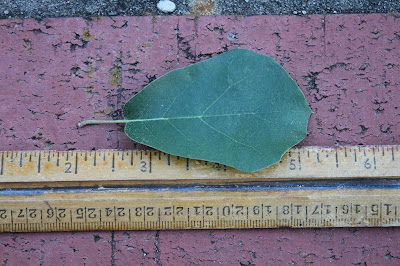 |
| The Arkansas oak has grown in direct competition with a Nuttall oak (Quercus texana), pictured to the right. The Nuttall oak is five to ten years older than the Arkansas oak. |
 |
| From another angle, the Arkansas oak has a perfectly straight trunk, but the Nuttall oak, pictured left, still has a substantially thicker trunk. |
 |
| Toward the base of the trunk, bark on the Arkansas oak is dark gray and very rough with no discernible pattern. |
 |
| Above eye level, we see that the young bark has a different texture. It's still rough, but there are some smooth patches. |
 |
| Arkasnas oaks have simple, alternate leaves. |
 |
| alternate leaf arrangement of Quercus arkansana |
 |
| Can you see the fuzzy texture on the twig? |
 |
| Arkansas oak leaves vary in shape. Some resemble post oak leaves. |
 |
| Unlike the post oak, the Arkansas oak is in the red-oak group. In this photograph you can see the bristle tips of the Arkansas oak leaves. |
 |
| bristle tips of Quercus arkansana leaves |
 |
| On November 7th, leaves are still dark green, but they lack their summer luster. |
 |
| Leaves aren't big or showy, measuring under 4 inches in length, petiole included. |
 |
| Underneath, leaves are visibly fuzzy, but do not particularly feel fuzzy. |
 |
| The small, round, striped acorn is half an inch long. According to the online literature, Quercus arkansana is a threatened species of oak. This little acorn ought to be planted! |


